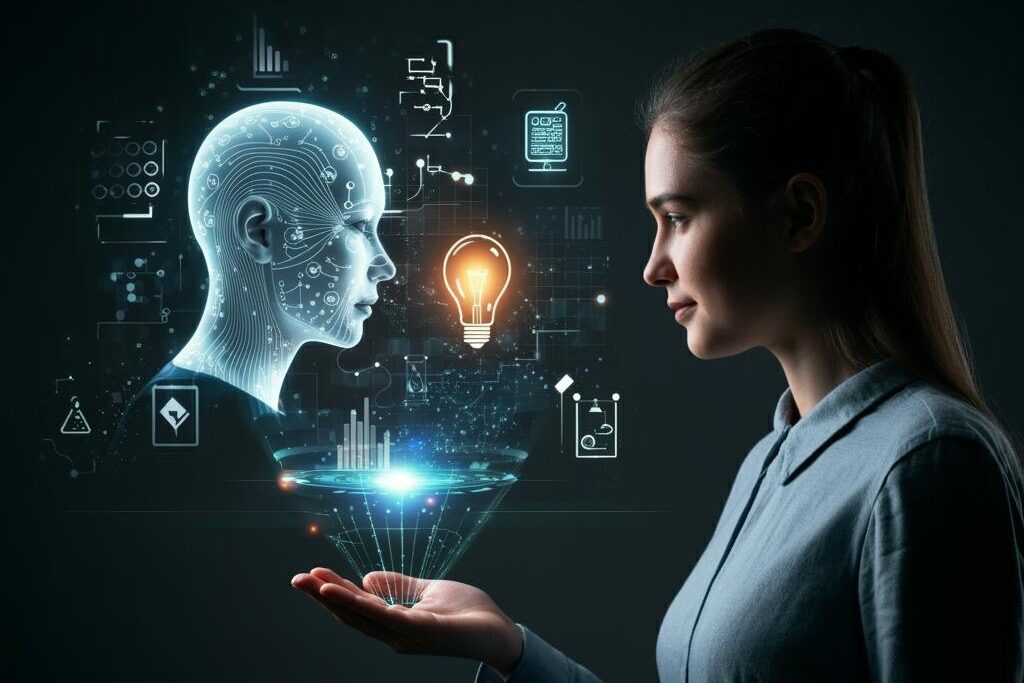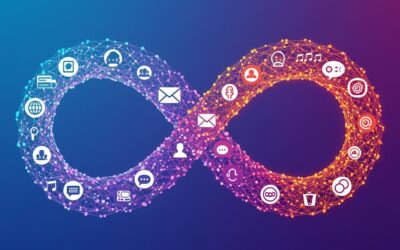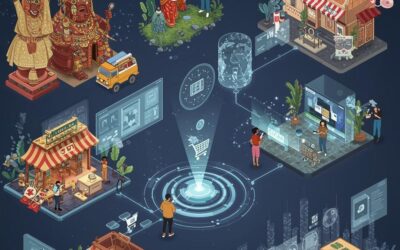AI and human imagination are often seen as opposing forces, but in reality, they are deeply complementary. As someone who has worked extensively with AI-driven solutions in industries like retail, e-commerce, and finance, I’ve witnessed firsthand how the synergy of AI and human creativity can unlock transformative potential. AI is not here to replace us, it’s here to expand our thinking, challenge our assumptions, and help us see possibilities we might have missed.
AI: The Collective Mind
AI can be likened to the collective mind of countless experts. It’s trained on vast datasets, encompassing knowledge, patterns, and insights that no single individual could ever accumulate in a lifetime. Each AI output reflects a unique blend of this training data—like a voice with its own accent. For example, when I worked on delivering AI-powered marketing solutions for major clients like Shiseido, AI’s ability to analyze massive amounts of customer data and provide actionable insights was invaluable.
But let’s be clear: AI isn’t perfect. It’s shaped by human inputs, which means it inherits both our strengths and our biases. This is why human imagination remains essential. AI might uncover hidden patterns or generate innovative ideas, but it’s up to us to interpret, refine, and apply these outputs in meaningful ways.
The Role of Human Imagination
Imagination is what allows humans to guide AI, asking the right questions and critically evaluating its responses. Even absolute experts in their fields can benefit from AI, not because it replaces their knowledge, but because it enhances it.
For example, in my work as Product Lead at Buy.Social, I leverage AI to develop a social commerce platform with predictive analytics and personalized recommendations. While AI provides me with valuable data-driven insights and ideas, it is human creativity and strategic thinking that ensures the platform is aligned with market needs and customer expectations.
Where AI and Imagination Meet
When AI and imagination work hand in hand, the results can be transformative. Here are a few ways this collaboration is breaking barriers:
- Uncovering Hidden Patterns:
AI excels at analyzing complex datasets to find patterns humans might overlook. For example, during my time at Merkle Hong Kong, we used AI-driven analytics to optimize marketing strategies for Shiseido, uncovering insights that led to better resource allocation and improved ROI. - Challenging Assumptions:
AI can challenge long-held assumptions by presenting alternative perspectives. In one project, I worked on integrating augmented reality (AR) with AI for an e-commerce solution. The AI suggested AR features that hadn’t been part of the original scope, pushing us to rethink how customers engage with products online. - Driving Innovation:
By generating ideas that no single expert might have considered, AI acts as a catalyst for innovation. For instance, AI-powered tools like ChatGPT or Hugging Face enable creatives and strategists to brainstorm faster, iterate more efficiently, and explore new frontiers.
The Responsibility of Using AI
While the potential of AI is immense, it’s not without risks. AI is only as good as the data it’s trained on, which means it can perpetuate biases or produce flawed recommendations. This is why critical thinking is essential.
In my experience, responsible AI usage involves:
- Asking the right questions: What problem are we trying to solve?
- Validating its outputs: Is this insight accurate and actionable?
- Considering ethical implications: Are we using AI in a way that benefits people and organizations?
For example, when implementing AI-driven solutions for omnichannel strategies, I always ensure that the data being used complies with privacy regulations and aligns with the brand’s values.
Breaking Barriers Together
The true magic happens when organizations embrace the collaboration between AI and human imagination. Together, they can:
- Redefine customer experiences: Personalization at scale, as I’ve helped deliver for brands like Pandora, transforms how customers interact with products and services.
- Innovate faster: AI accelerates brainstorming and decision-making, enabling organizations to stay ahead of the curve.
- Solve complex problems: From fraud detection in banking to optimizing supply chains in retail, the possibilities are endless.
Final Thoughts
AI is not the enemy of creativity, and not the final word. When paired with human imagination, it becomes a powerful tool for innovation and progress. Whether it’s uncovering hidden patterns, challenging assumptions, or driving transformative ideas, the collaboration between AI and humans can break barriers and redefine what’s possible.
As someone deeply passionate about leveraging AI to solve real-world challenges, I believe it’s up to us to wield this tool responsibly, ensuring it serves as a force for good.




